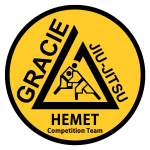Call Us Today! (951) 603-4202 | info@mygraciehemet.com

In the world of martial arts, the greatest enemies aren’t always found on the mat — sometimes, they hide in whispered words, sideways glances, and subtle criticism.
Gossip and negativity don’t leave visible marks like a choke or an armbar, but they erode the foundation of any dojo with the same force as a well-placed strike.

If you train Jiu-Jitsu, you know that your gi is more than just a piece of clothing; it is an essential tool for your training and competitions. Keeping your gi clean and well-maintained is not just about hygiene but also about respect for your training partners. The intense physical contact during fights makes the fabric absorb sweat and dirt, making proper washing a priority.
Check out the complete guide below to ensure your gi lasts longer and remains in great condition.

Jiu-jitsu is a martial art that demands intense physical effort, mental resilience, and dedication. However, like any high-performance activity, overtraining can be a major enemy for practitioners, negatively affecting both performance and long-term health. In this article, we will explore what overtraining is, how to identify it, and, most importantly, how to avoid it.

Jiu-jitsu fosters a unique sense of community and personal growth, but its close-contact nature can also lead to challenges, particularly when it comes to skin infections. Among these, Molluscum Contagiosum poses a notable threat. Despite being relatively mild in nature, this highly contagious skin infection can spread rapidly in training environments, disrupting classes and sidelining practitioners.

In the world of jiu-jitsu, attention to detail goes far beyond techniques and physical conditioning. One often overlooked but extremely important factor is nail care. For both adults and kids, long nails can become a real enemy on the mat. In this article, we’ll explore the dangers associated with long nails and why keeping them trimmed is essential for safe and effective jiu-jitsu practice.

If you practice jiu-jitsu, you’ve likely heard of (or even seen) the infamous “cauliflower ear.” This is one of the most common enemies on the mat, especially for those who spend hours dedicated to the sport. In this article, we’ll discuss what cauliflower ear is, how it develops, and most importantly, how you can protect your ears and care for them if it happens.

Jiu-Jitsu is distinct from other martial arts because of its focus on close contact and ground fighting. This physical proximity increases the likelihood of impacts to the face and mouth, which may come from opponents’ limbs, accidental headbutts, or falls on the mat. These incidents can result in significant trauma to the teeth, gums, lips, and jaw.

For many jiu-jitsu practitioners, the plateau effect is an inevitable and challenging part of the journey, bringing frustration and even doubts about continuing the sport. The feeling of “staying in one place” can undermine confidence and motivation, impacting not only physical performance but also mental health. The good news is that the plateau effect can be understood, faced, and overcome. In this article, we’ll delve deeper into this phenomenon, exploring its causes, effects, and the best strategies to break through this barrier.

Ringworm is a fungal infection of the skin. Despite its name, ringworm is not caused by a worm but by fungi called dermatophytes. These fungi feed on keratin, a protein found in the skin, hair, and nails.
But fear not, Jiu-Jitsu master! With the right techniques, you can dominate ringworm before it dominates you.

Ah, jiu-jitsu! The gentle art, the sport of kings, the favorite pastime of those who love to challenge themselves on a mat with other practitioners. But behind all this nobility and impeccable technique lies a challenge we all know well: injuries.

During the summer months, elevated body temperatures and increased sweating can create favorable conditions for the growth of bacteria and fungi, leading to various skin problems. To help protect yourself, here are some tips to consider.
To avoid these unpleasant conditions and protect your skin, it’s crucial to adopt a proper hygiene routine before, during, and after training. Here are some important tips

With the arrival of summer in Hemet, jiu-jitsu practitioners face challenges due to high temperatures. The intense heat increases the risk of dehydration and heat exhaustion during training sessions. It is crucial to stay hydrated and be mindful of signs of overheating.
In addition to drinking water regularly, practitioners can prepare a homemade Electrolyte drink to help replenish electrolytes lost during sweating.

